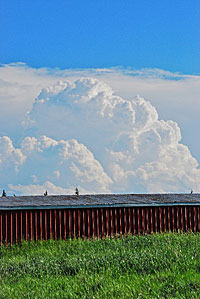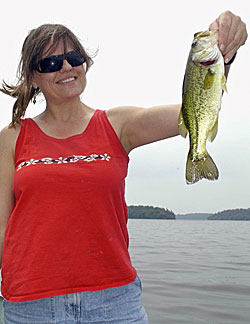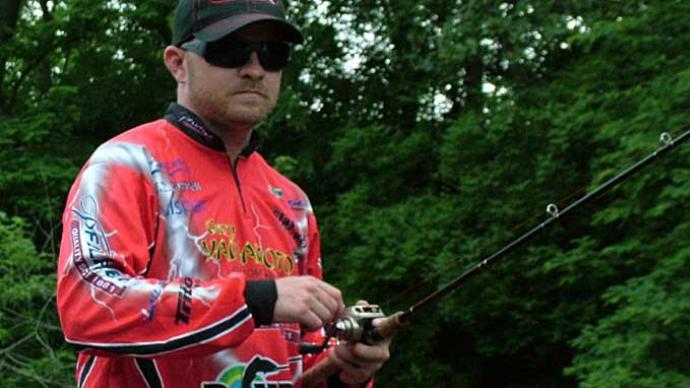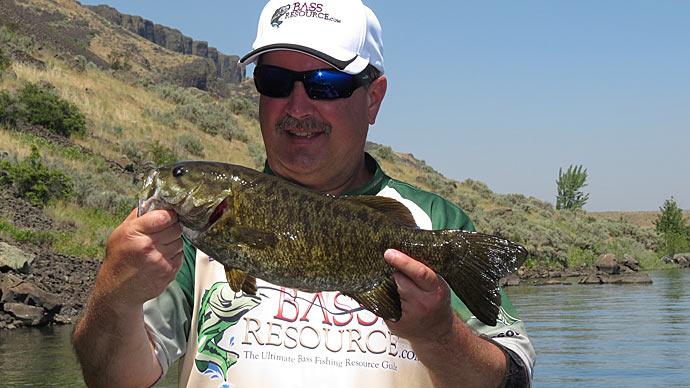
I have had the opportunity to fish with some of the country’s top guides and tournament anglers, and their intensity while fishing never ceases to amaze me. They are almost universally robotic machines when they are on the water. These guys are wired whether it’s fun fishing or in tournament mode.
However, that does not mean that they have tunnel vision and skip over the little details around them that make them successful. Bird activity, cloud cover and bottom composition changes, current breaks, wind direction, and other seemingly minute or unimportant details all go into catching or not catchin’ fish.
“I’ve always noted bird activity when I’m fishing,” said tournament veteran and smallmouth sage Joe Balog, who has now transplanted to Florida. “It’s universal, be it fresh or saltwater, that when you see birds, there are going to be baitfish around, and you need to pay attention to what the birds tell you. This is even more true since I moved to Florida, and I’ve been fishing saltwater more, but it applies to anywhere you fish.”
“Herons, and all wading birds for that matter, are there for one reason – food,” Balog said. “There might be frogs, snails, or crayfish, but many times its baitfish or panfish that they’re attracted to. Often, you’ll see herons staked out near an area that has a lot of bedding panfish. That should immediately tell you that it’s quite likely there’s a big bass or two in the area. Huge bass, largemouth especially, love to prey on bedding panfish. They are typically solitary fish that wait on the edge of the spawning beds for hapless panfish. Birds are a prime indicator of bedding panfish, and trophy bass are likely to be in the area.”
“There are about six or eight birds that you will want to be conscious of. The bird type alone is a good indicator of the forage type present. Of course, birds you see in the open water, like terns and gulls, are indicators that there are baitfish, like shad, present. I was on a reservoir once where the shad spawn was taking place. I hit four different rocky banks where I thought the shad might be spawning without success. At the fifth spot, I could see herons lined up along the shoreline. Guess where the shad were? Even coots indicate good vegetation in the area, and it is likely to attract baitfish and birds. ”
“Current seams are another thing most anglers don’t pay enough attention to,” offered Balog. “Rarely is any given body of water sitting still. It is always moving, and there’s always some current, whether because of wind, power generation, tides, or flowing water. The current seams and edges are obvious when there’s floating vegetation, debris, and trash, but sometimes the current seams and eddies are not as noticeable. Current puts more fish in more predictable locations if you’re paying attention. You might be fishing the best cover, but if there’s an adjacent relatively featureless flat with current moving over it, that’s where more of the fish will be. ”

As a general rule, bass don’t like strong currents, especially largemouths, but they also know that current is like a conveyor belt that will bring food past, so they camp out just off the edge, darting out to capture whatever is drifting past. Current makes foraging easier, so bass will always take advantage of the opportunity. Be mindful of pinch points where the lake or reservoir narrows down. This is the kind of place where currents start because of wind or rising or lowering water levels.
“I don’t think anglers pay enough attention to bottom composition,” Balog speculated. “I know it’s critical to find where rocks meet different bottom compositions, whether sand, mud, or vegetation in the Great Lakes. It’s that edge that is going to concentrate bass. You can have a huge field of boulders and rocks that bass might occupy, but they will be concentrated where those rocks meet a different bottom composition that creates a defined finite edge.”
Years ago, finding those edges was difficult, but it’s been made much easier with the invention of side imaging. “I know with my Humminbird Helix 10, it’s so much easier to see that transition from mud to rocks because of the high frequency that shows more detail and the transition between a hard versus soft bottom, and the image is so much cleaner and clearer. There was a time when you couldn’t even mark the bottom in three feet of water. Now, I can see 80 feet to the side with side imaging.”

Some anglers are so intense, so focused on the fishing that they don’t notice subtle changes in cloud cover, shade, or wind direction. “I know when fishing for smallmouths, clouds can be a hindrance,” claimed bronzeback guru and tournament angler Scott Dobson. “I want bright, clear conditions to see in the water. Smallmouths are sight feeders, so they seem to be more active when the sun is out and can see farther then, too. Under the right conditions, I can sight fish in 12 feet of water if it’s sunny and clear.”
Dobson said there are times he’s fished through an area where he knows there are fish and not done too well when it’s cloudy, and then returned when the sun breaks out and pounded the bass.
Not only is it good to look to the skies every once in a while for approaching weather, but impending storms almost without fail cause fish to go on a short, intense feeding binge.
On sunny days especially, bass will locate according to where the sun and shade are. “You need to pay attention to where you’re catching fish on docks at different times of the day,” shared Dobson. “Bass might be right out on the end of the docks in the morning if that’s where the shade is. If you return later, the other end of the dock will be shaded, where the bass are likely to be. Wood docks are always more productive than metal docks, even early in the spring.”
Overhanging trees are the same way. One side of an island might be in full sunshine in the morning, offering no shade, but in the afternoon, when the sun hits the opposite side of the island, shade from overhanging limbs can be the perfect place to pitch some topwater lures. Planning to take advantage of shaded areas at the right time of day can pay big dividends. Bass see it as another form of cover.
Most anglers don’t think about wind enough. The wind dramatically affects where fish will locate and how active they are. “Wind can be good, especially when targeting largemouths,” declared Dobson. “Wind allows you to cover more water. You can cast farther by using bigger baits when it’s windy. Wind diffuses the light, so fish don’t get as good a look at your lure and are likelier to venture farther from cover. Going from a flat calm day to a windy one will change where bass are located and how active they are.”
Unlike docks, Dobson said metal seawalls are better than wood seawalls, especially in the spring. “Metal seawalls will absorb and then reflect more heat from the sunshine. Consequently, the water near metal seawalls will be warmer, which is huge when the water is still cold.”
A novel detail that Dobson said many anglers don’t pay attention to is what’s in their livewell. “If you’re holding fish in your livewell, they inevitably regurgitate what they’ve eaten. Check out what they threw up. It will give you a better idea of the color and size of the lure you should be using.”
I always told my customers that three small details would help them catch a lot more fish – new line, sharp hooks, and good knots. Quite often, it’s all in the details.




